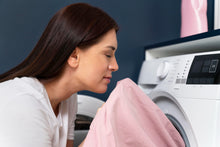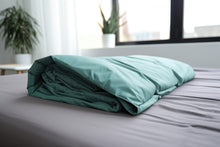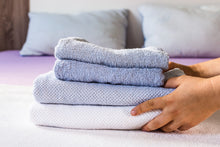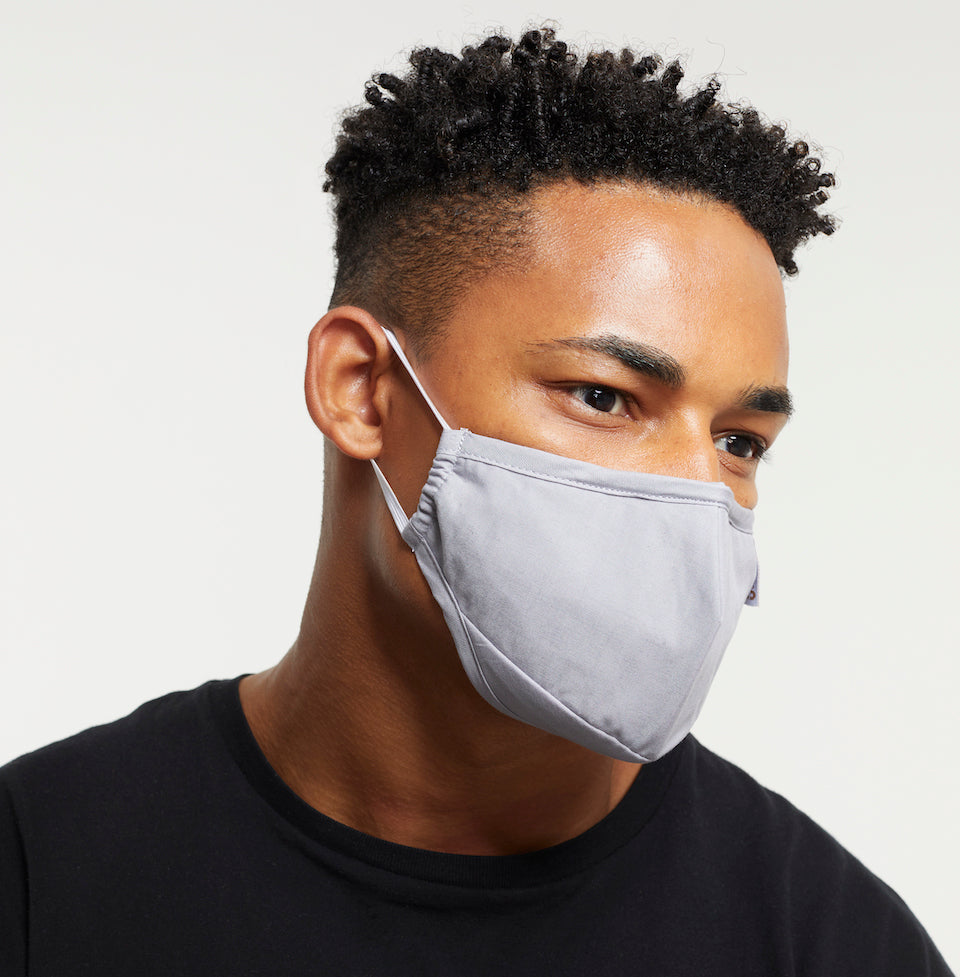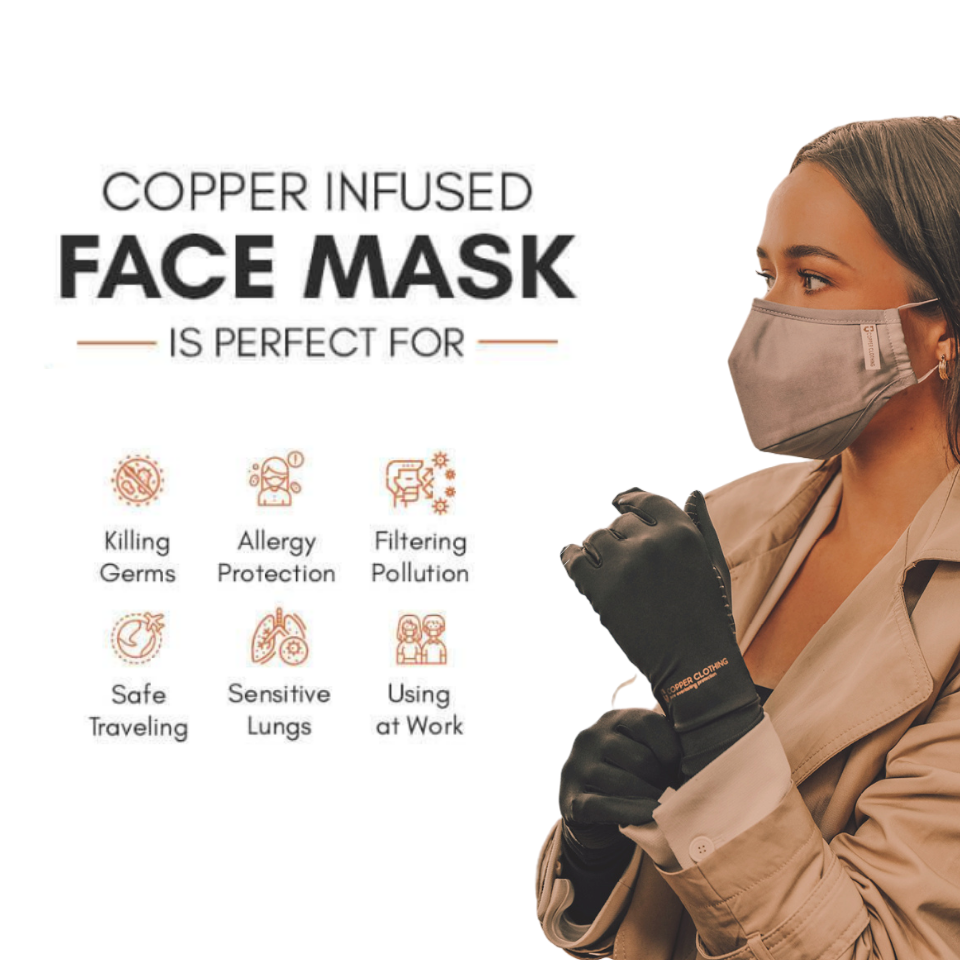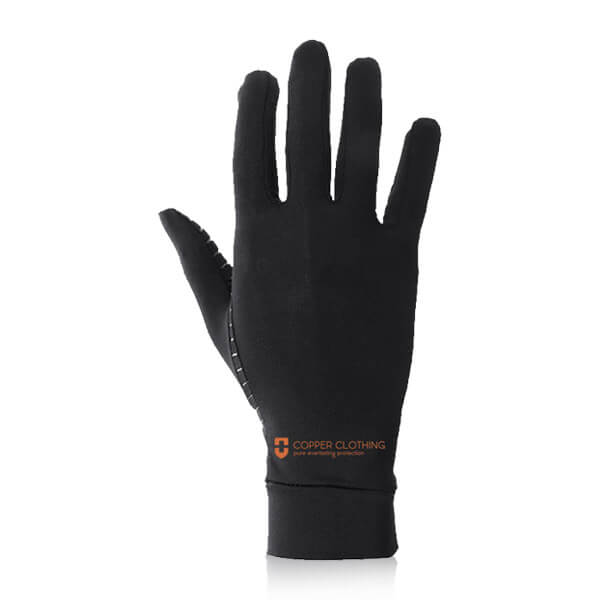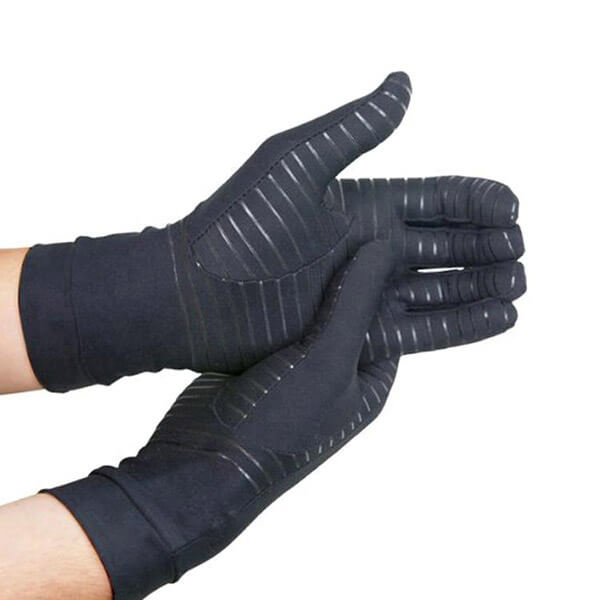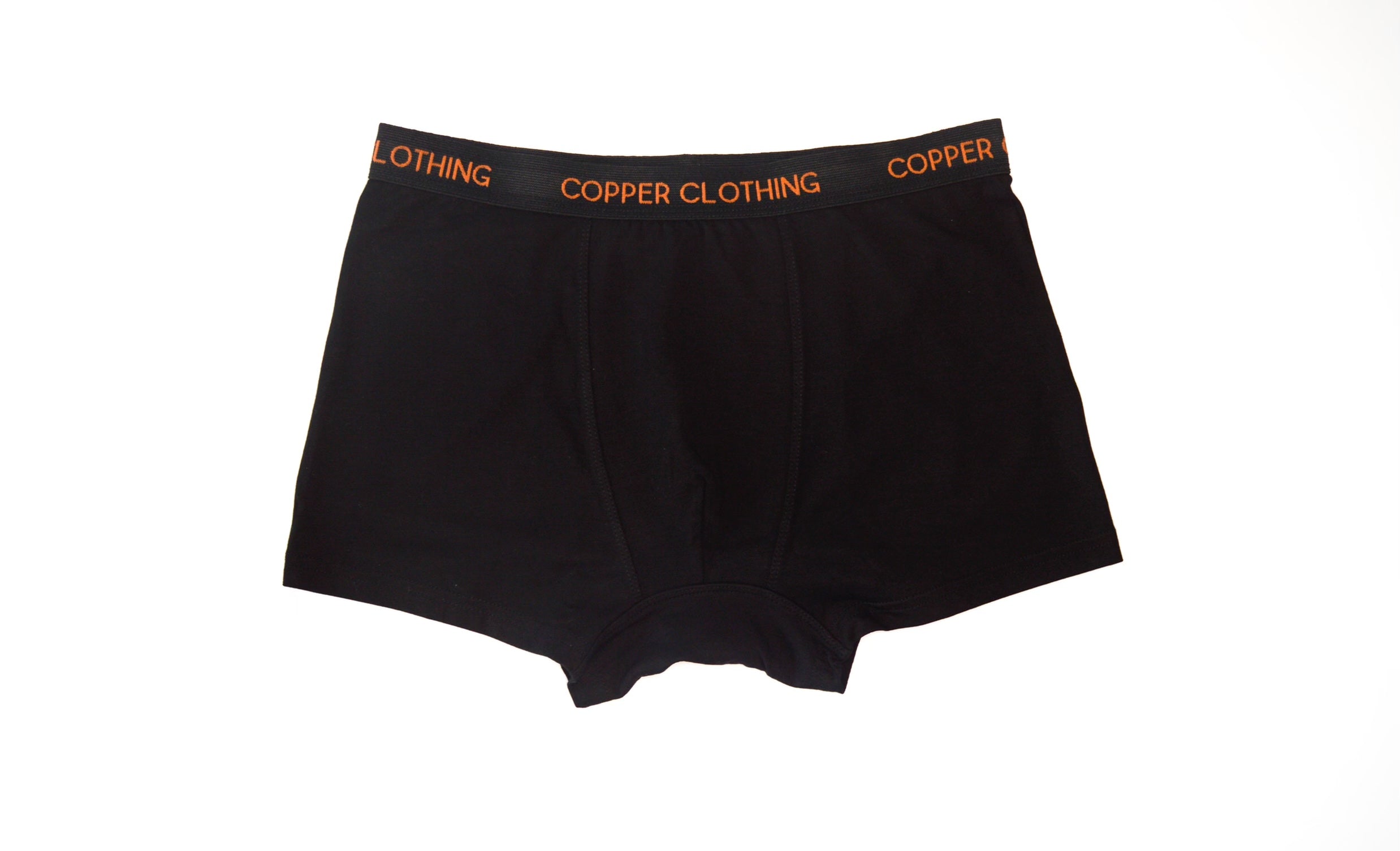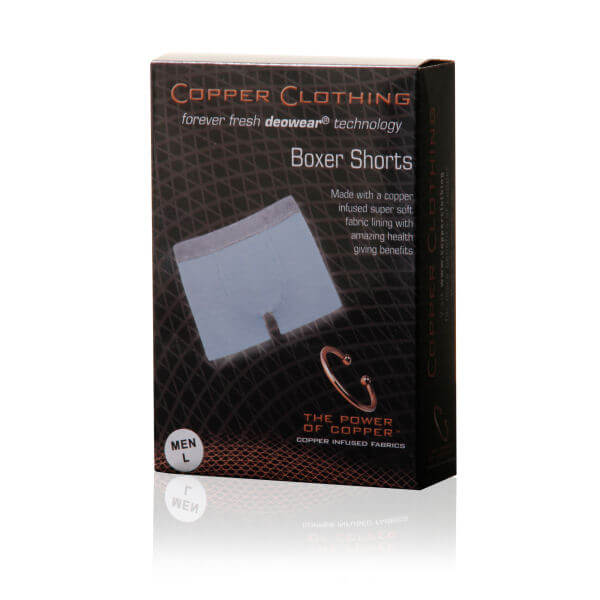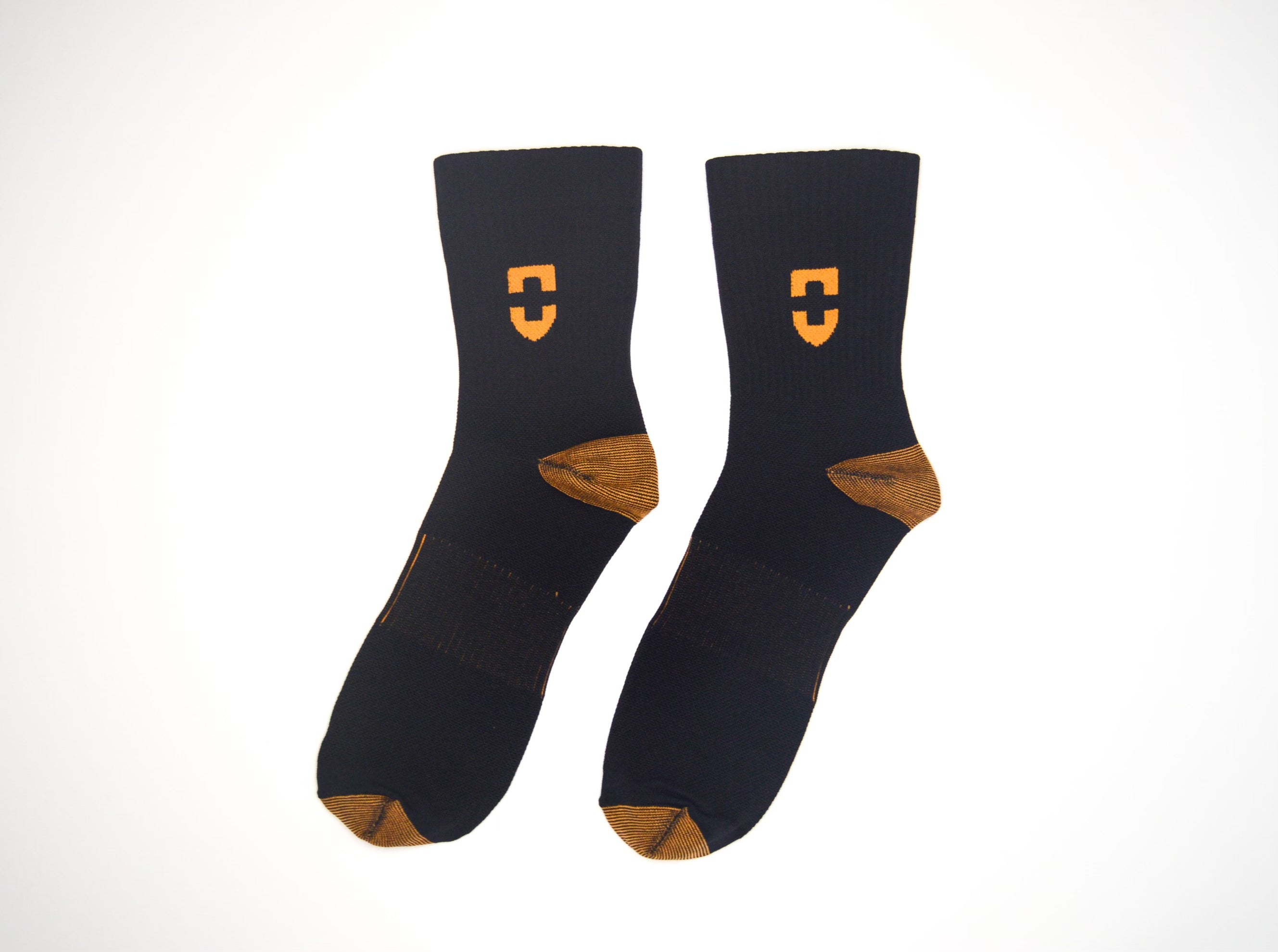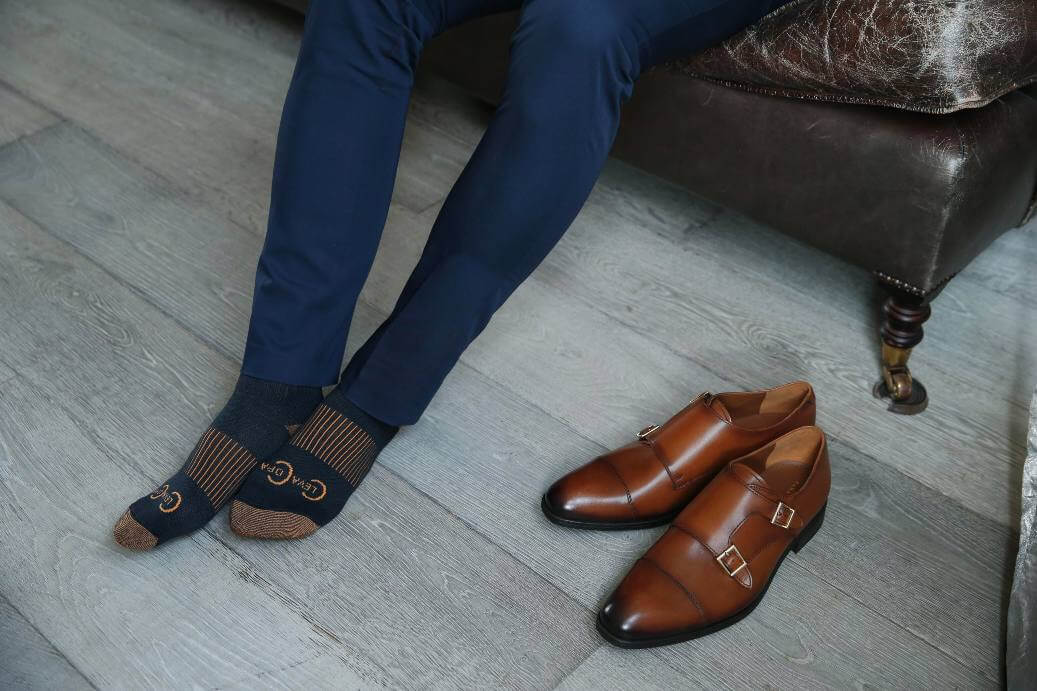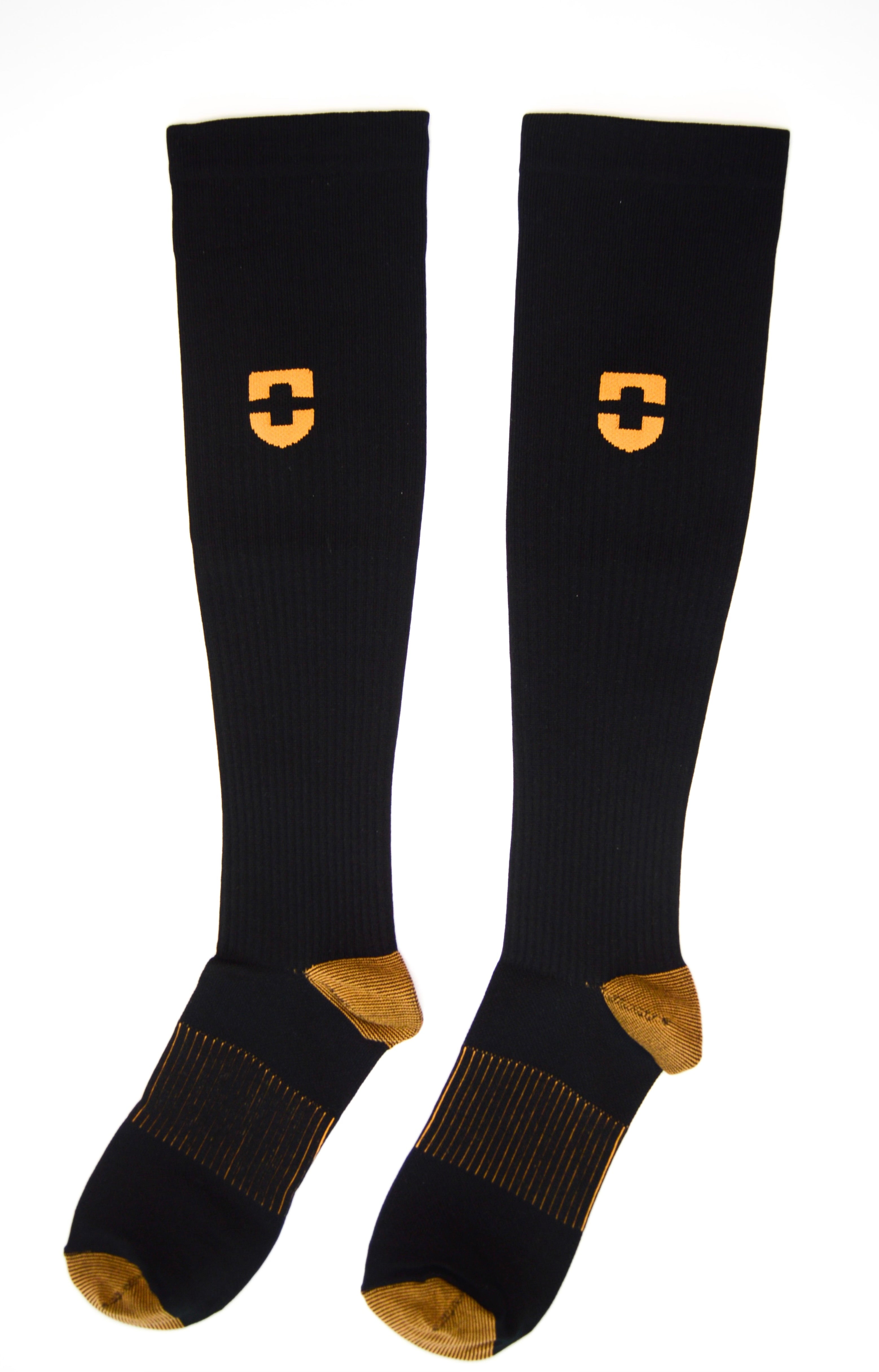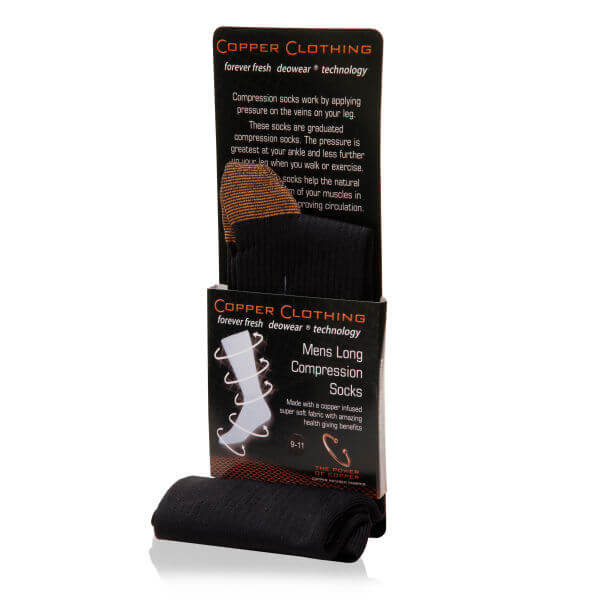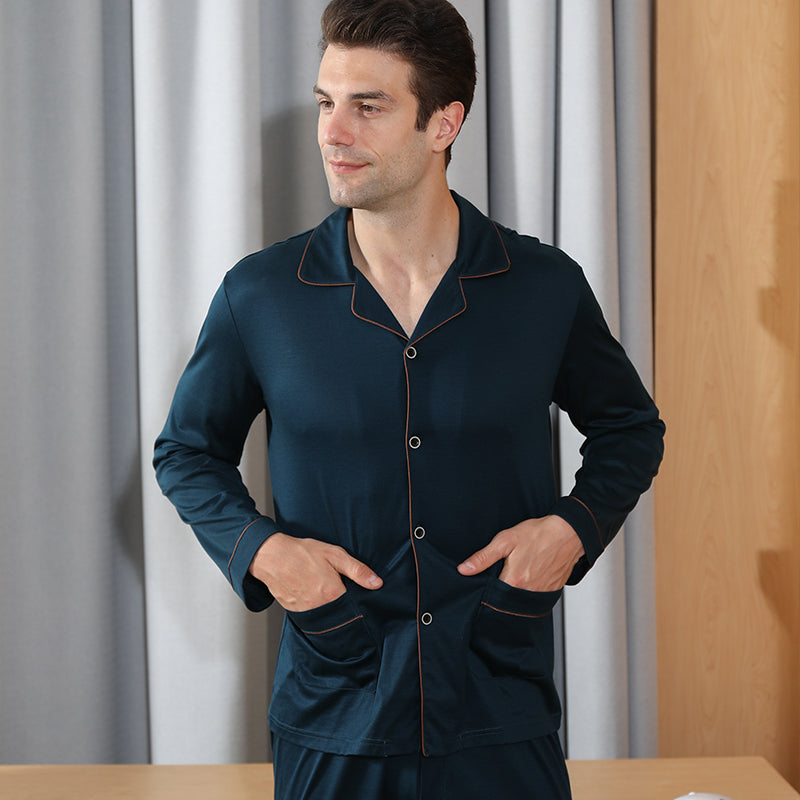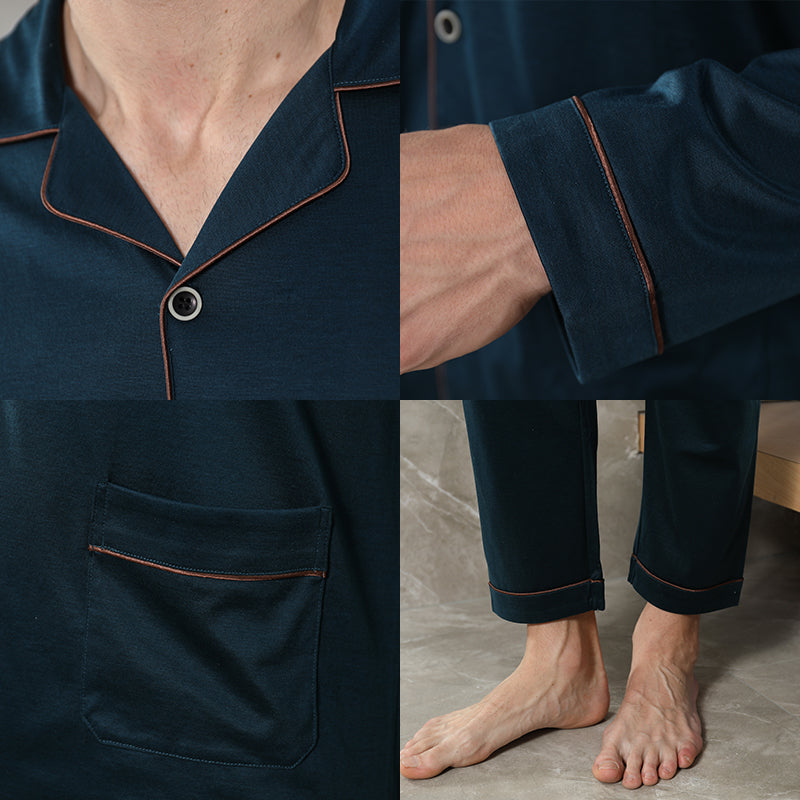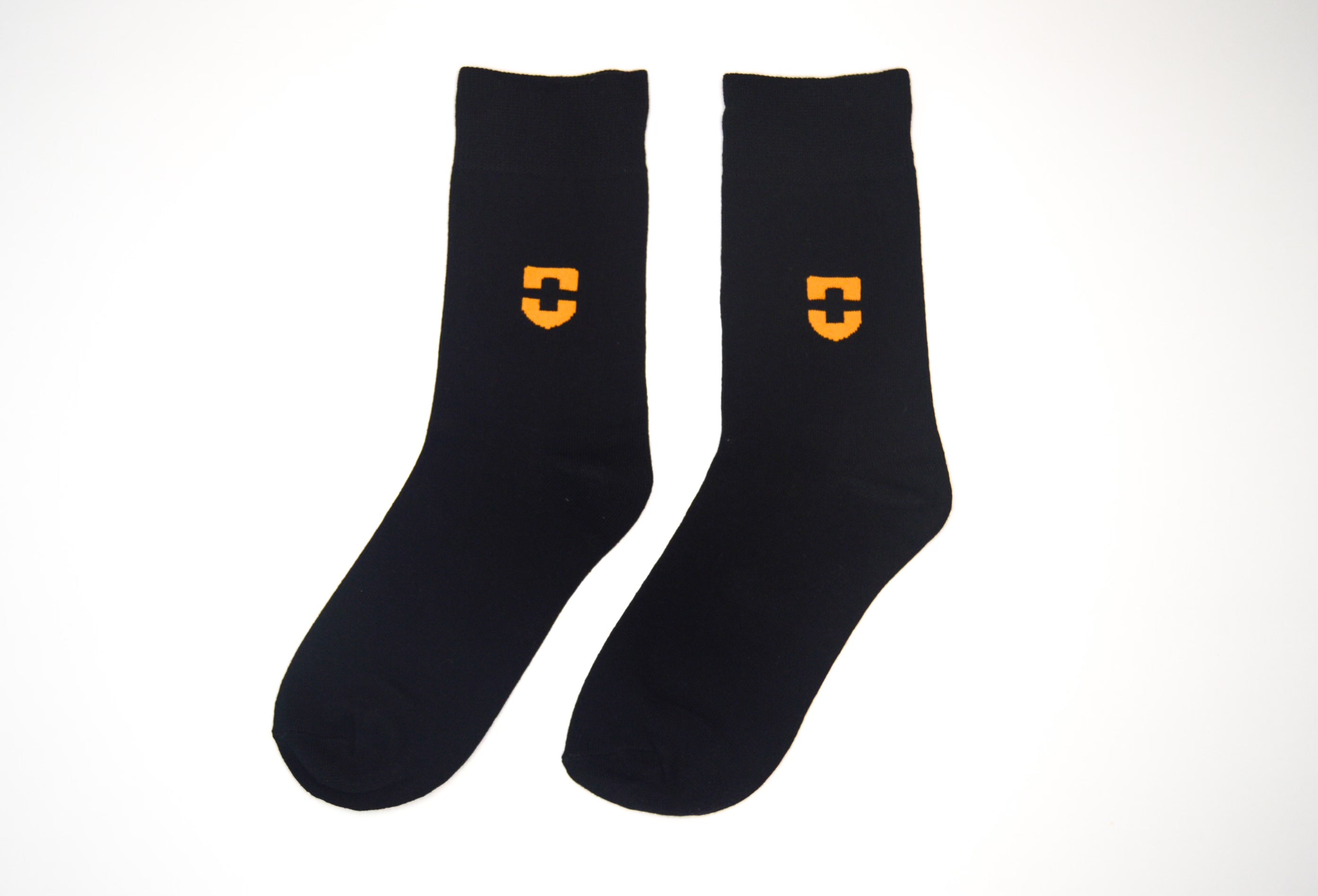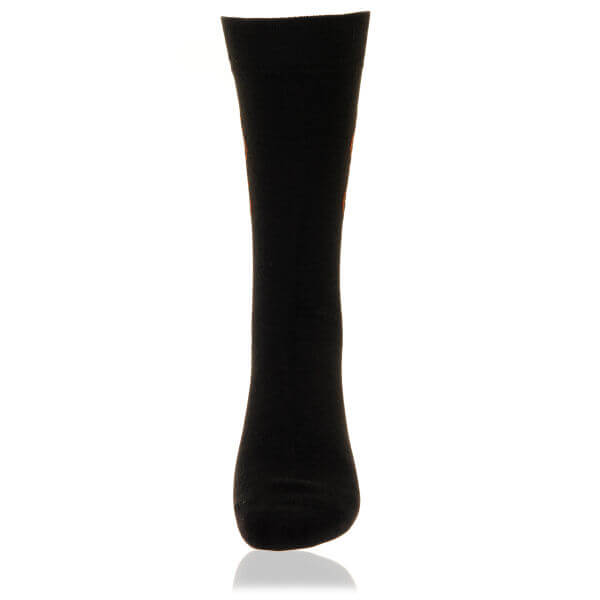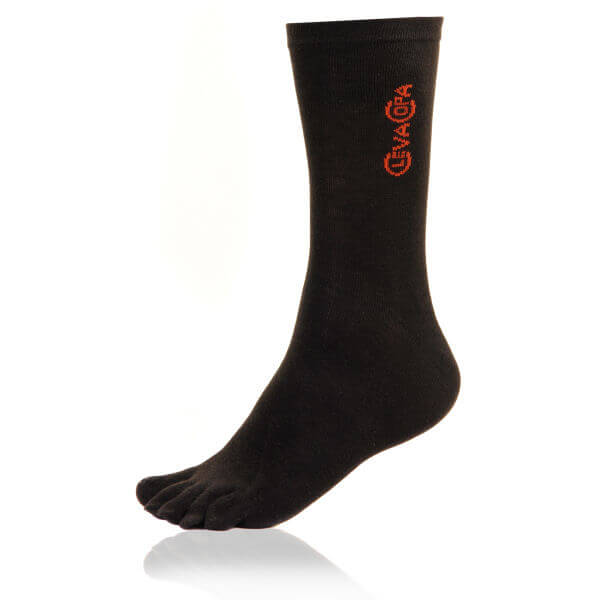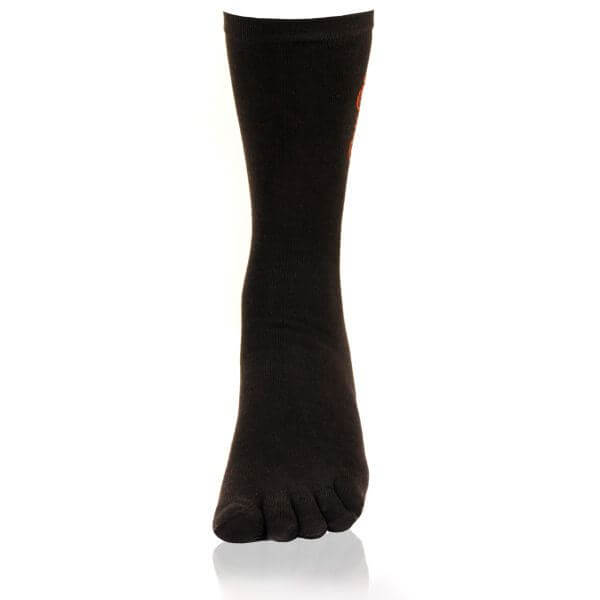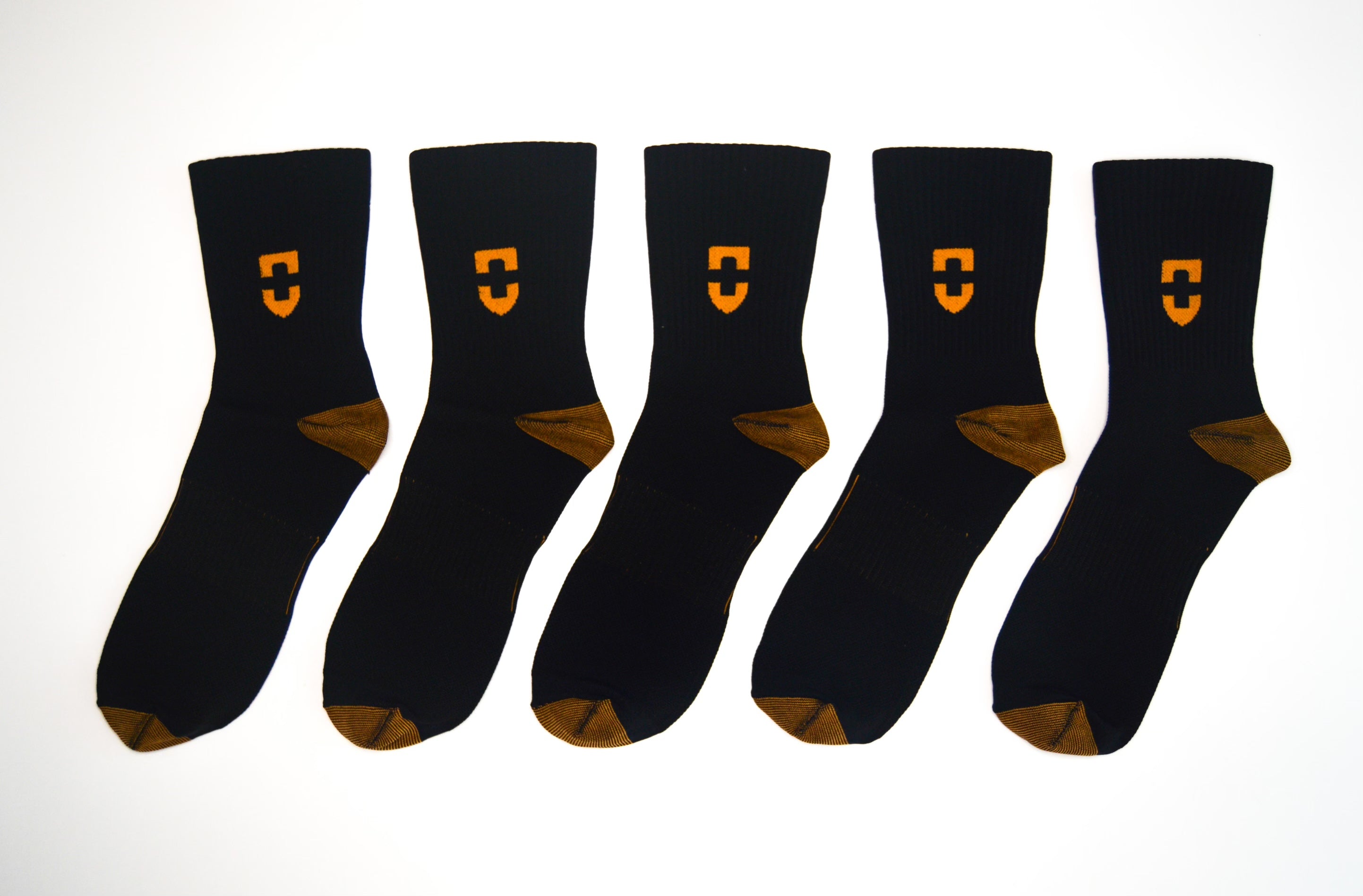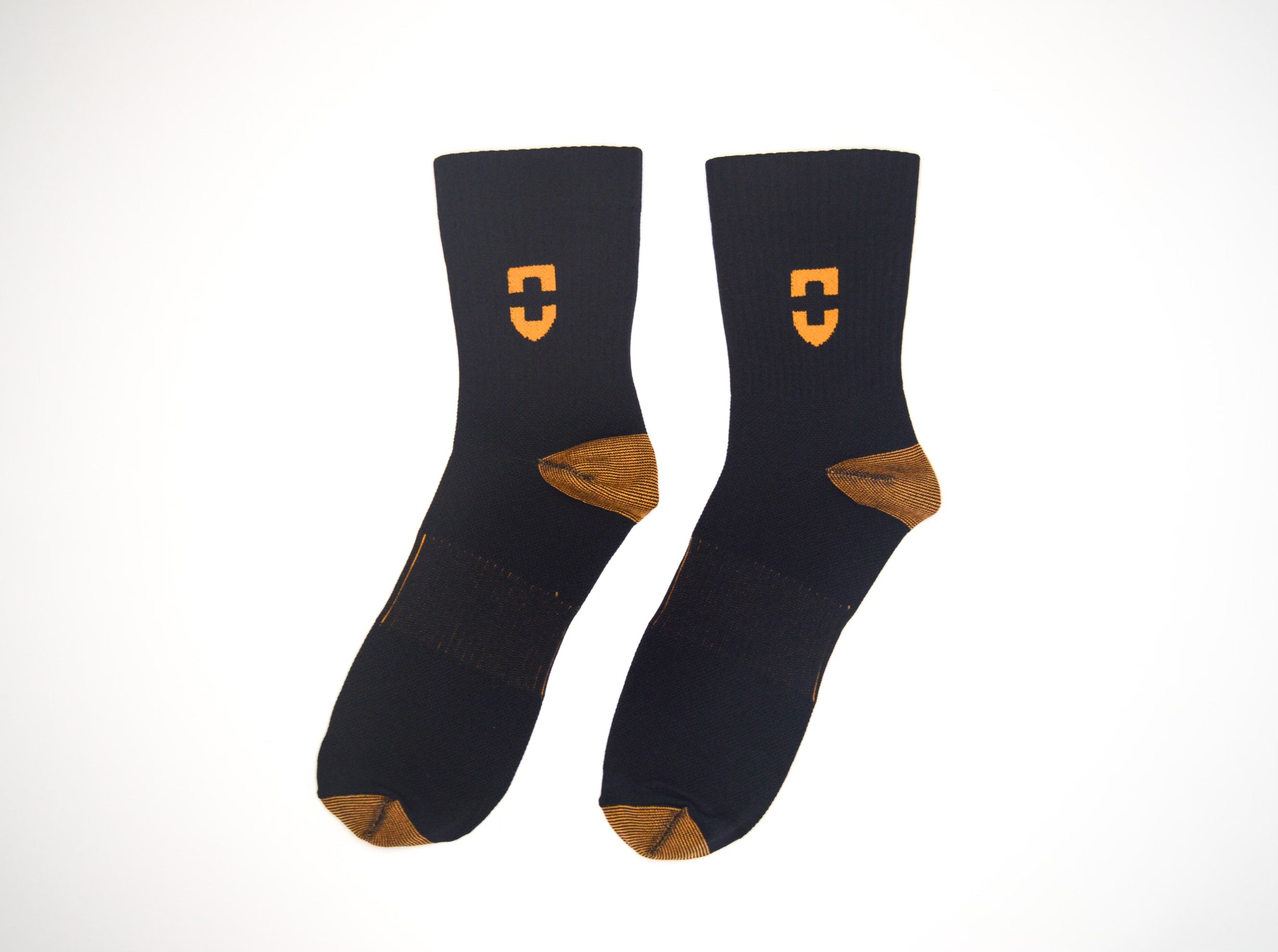The Ultimate Guide to Compression Socks for Nurses (Research Backed)
Published
September 30 2022
Nurses – the heroes that don't get the credit they deserve!
Being a nurse is one of the most demanding professions – both physically and emotionally. The long working hours where you are expected to be on your feet for most of your shift definitely take a toll on your body. And your legs are affected by this the most! They endure pain, swelling, soreness, sweat and everything else you throw at them to make you stand on your feet all day long.
No matter how rewarding the healthcare field is, if you’re a nurse, by the end of your workday, you may find yourself complaining about sore, swollen and tired feet and legs, making you at higher risk of several feet problems.
Why are Nurses at Risk?
From medical professionals to bartenders to cashiers, the list of professions that demand long-standing hours keeps getting longer. There are many jobs that require covering multiple shifts hours, and the professionals in these fields have to stand without breaks. Nursing is one such profession where professionals are required to cover at least a 12-hour shift, which is quite normal.
According to a study, nurses had no opportunities of taking a break to sit down or have a meal for 10% of the shifts they covered. Another study reported that some nurses had shifts of up to 23 hours and 40 minutes.
Employers want nurses who work overtime as the medical field demands it. This requires them to stand for an extended period. A 2010 study stated that such extended work hours are associated with harmful behavioural, cognitive and psychomotor effects like emotional disturbances, occupational injuries and errors. These risks can even endanger the employee's life and are linked to increased health complications.
What are the Risks of Standing for Too Long?
Excess of anything is bad. The same goes for even standing or sitting for too long. This is because maintaining the same position for a prolonged period can cause several health problems, like decreased blood circulation in the lower legs. Arteries pump your blood and oxygen away from the heart, while veins push the deoxygenated waste fluids and blood to the heart. When a person stands or sits for too long, the veins pump against the gravitational force. If this is prolonged, it can cause stress on your body.
According to a 2018 study, every occupation that requires standing for a long period is associated with a twofold risk of heart disease as opposed to jobs that require predominantly sitting. Prolonged standing occupations include risks like increased hydrostatic venous pressure, blood pooling in the lower limbs and oxidative stress. Oxidative stress occurs when reactive oxygen species (ROS) accumulate in your bloodstream.
Healthcare workers who stand for 90% of their shift have increased ROS. If this goes unchecked, it creates a toxic level for the body cells. High ROS levels are linked to systematic diseases like cancer, chronic venous insufficiency and atherogenesis. Other risks involved due to prolonged standing hours in the nursing profession include:
-
Plantar Fasciitis
Plantar fasciitis is an injury caused due to overusing your ligament. This causes small tears in the plantar fascia, which acts as a cantilever for the arch of our feet. While standing or walking, the pressure is put down on the arch, which stretches the ligament. As the pressure begins to come off the arch through retraction, the plantar fascia snaps back in action to keep the arch from collapsing. It causes a stabbing pain in the foot's sole, inflammation and tenderness around the area.
Compression socks can help heal the pain and discomfort caused by plantar fasciitis. They help correct your alignment, control inflammation and muscle damage, and facilitate the healing process.
-
Oedema
Feet and leg swelling is another common health risk of working on the feet all day long. It can cause fluids to build up in your legs, commonly called oedema. Oedema is associated with poor blood circulation, which can cause discomfort and pain.
Compression socks can help treat the causes of oedema by promoting venous blood flow and providing gentle graduated pressure on the leg veins and valves. This pressure improves blood circulation due to compression on the surface of muscles, veins and arteries in the lower legs.
-
Blisters
When the foot experiences friction, the outer layer of the skin separates to form fluid-filled blisters that are common for people who constantly wear shoes and exercise. Nurses can attract blisters as they are always on their feet. The good news is that blisters can commonly heal on their own, but the entire period of dealing with them is painful. However, it is better to prevent them altogether and compression socks are perfect for that!
-
Heel Spurs
Heel spur causes an intense bony, reddened and painful bump on your heels. This foot condition happens due to the built-up of calcium lump in the heel. While surgeries and medications are an option, compression socks are also an excellent product to try for relieving pain in mild cases.
Compression socks create pressure on the leg. This increases blood flow and reduces repeated interaction between heels and hard surfaces. However, combining compression socks with OTC medicines and ice packs is only a temporary solution to the stinging pain caused by heel spurs. See a doctor for complete treatment.
-
Shin Splints
Unexpected irritation and pain in your lower legs can happen when your lower leg muscles get pulled due to high-impact activities like dancing or running. This condition is called shin splints because the pain begins through the shin bone, the large bone in your lower leg.
Shin splints occur when you overwork your shinbone and the muscle tissues around it. Nurses who stand for an extended period are prone to shin splints. They heal on their own; however, it takes time. In order to ease the pain and prevent further damage, many people recommend wearing compression socks for shin splints as they support your veins, boost blood circulation and reduce swelling.
-
Athlete's Foot
Also known as ringworm of the foot or tinea pedis, an athlete's foot is a fungal infection that starts between the toes. This contagious infection can spread due to direct contact with contaminated bed sheets, socks, shoes, floors, towels or infected human beings. It is caused due to fungi such as Microsporum, Epidermophyton and Trichophyton. These fungi are already present on your skin but multiply in a warm and damp environment.
Nurses who wear tight shoes can get this condition since their toes are tightly squeezed together. Compression socks are the best socks for athlete's foot as they fit close to your skin, absorbing all the excess moisture and keeping the skin of your leg odour-free, clean and dry.
Solution - Compression socks!
A study by NCBI has shown that the use of compression stockings among nurses reduces oedema and pain. In fact, the same study shows that the use of compression stockings in healthy adult women also indicates an improvement in lymphatic pump pressure along with a reduction in discomfort, oedema and general leg pain.
Compression socks have the feature to fight multiple problems nurses face. As mentioned earlier, standing for a prolonged period can result in a fluid build-up, leading to pain and inflammation for many. Even the gravity starts working against you, pooling blood in your lower legs and causing circulation problems. This leads to leg problems and drained-out energy at the end of your shift.
But compression socks can prove to be your best care partner during long hours of standing!
What are the Benefits of Compression Socks for Nurses?
As a nurse, it is pretty common to feel your feet turning sore and tender by the end of your shift. If not today, someday you will feel the burn due to the tiring work hours you have to spend standing. Compression socks are perfect to curb the negative effects. Here are six benefits of compressions socks for nurses:
-
Reduces Leg Fatigue and Soreness
Fatigue, pain and soreness in the legs are some of the most common complaints nurses have due to the long hours of continuous standing. Along with stressing the mind, it even stresses your body. Compression socks increase blood and oxygen circulation to your legs by applying pressure to alleviate discomfort and pain. Moreover, standing for long can result in building lactic acid in your muscles. Compression socks can help eliminate this build-up to improve the soreness in your legs.
-
Provides Relief from Lymphedema
Lymphedema is a medical condition that causes a blockage in your lymphatic system, resulting in swollen legs and arms. It can be caused due to damaged lymph nodes as a result of radiation or chemotherapy. Compression socks can help you with lymphedema, in combination with other treatments, by giving you relief from the swelling. They offer pressure on the legs, around the ankles and feet to help your lymphatic system work properly.
-
Scales Down Varicose and Spider Veins
Varicose veins happen when your veins bulge out, become visible under the skin or twist and turn. Whereas the spider veins are smaller and resemble spider webs. There are chances of getting this condition when you stand for too long. This might happen due to the pooling of blood in the lower extremities. Compression socks help relieve varicose and spider veins difficulties by fitting perfectly around your foot and encouraging the blood flow back to the heart.
-
Reduces Chances of Developing DVT
DVT, Deep Vein Thrombosis, occurs when blood clots form in your deep veins. They sometimes might break free, travel through your bloodstream and block it. This blockage can cause pulmonary embolism, a blockage in your lungs, which can become life-threatening.
Compression therapy is known to reduce the occurrence of DVT. Compression socks allow your vascular system to function properly, reducing the risk of developing clots. Some doctors recommend compression socks to treat DVT, along with regular treatments if blood clots are already formed.
Moreover, a study by the Society of Occupational Medicine showed that compression stockings decreased lower limb venous pressure in nurses who had to stand for long hours. The stockings protected their feet against oxidative stress.
-
Regenerates Damaged Tissues
Nurses standing on their feet for the entire day miss out on the nutrients and oxygen required for their legs. Compression socks are known to apply pressure and get the blood to circulate healthily. They help regenerate damaged tissues and recover from injuries quickly.
-
Increases Your Overall Comfort
One of the biggest reasons nurses need compression socks is because it increases comfort throughout the day. All of the above benefits of compression socks will combine and decrease your discomfort. You won't feel your legs hurting or turning sore at the end of the shift, and you are less likely to develop blisters.
How are 'Copper' Compression Socks Better for Nurses?
Compression socks are already great for your feet, especially when you have to work on your feet all day long. Our Copper Compression Socks are particularly ideal for nurses due to the presence of copper! Copper-infused clothing is great because it contains anti-bacterial, anti-viral, anti-fungal and anti-odour properties. These properties are necessary when you are a nurse fighting sweaty, aching, sore and swollen feet every day.
As a nurse, your chances of getting a foot problem like athlete's foot, DVT or peripheral arterial disease (poor blood supply) are severe. Throw the advantages of Copper Compression Socks, and you are in for comfort and protection!
- Anti-odour
- Anti-inflammatory
- Anti-microbial
- Stay fresher for longer
- Promotes softer and healthier feet
Here's what people who travelled long hours or used our Copper Compression Socks for intense activities like hiking have to say:
When I first put them on, it felt like I was wearing the flight socks I wear when travelling long haul, tight, but not in an unpleasant way. I found they were a lovely snug, but comfortable fit and I immediately liked the feeling around the midsole area (where the vertical lines are in the sock design), which somehow made my feet feel lighter. – Camping With Style
I wore them comfortably within my trainers. They did keep my feet cooler. I was trying to be mindful of how my feet felt during the run but kept forgetting about them and having to remind myself. This felt like a good thing, after all, you don't really want to be thinking about your socks when you are running. They didn't bunch up at all, even though I was going over quite nasty rough terrain. Also, they didn't slip down my calf. – RunUltra
How do Compression Socks Work for Nurses?
Compression socks are tight-fit socks that are stretchable and work by gently applying pressure over your ankles and calves (if you wear long ones). This pressure promotes blood circulation, reduces pain and swelling, and prevents clot formation. Nurses can benefit from this as compression stockings assist your body in returning the blood to the heart to prevent it from accumulating in your legs while standing.
What is the Correct Compression Level for Nurses?
Many nurses who stand more than half the day prefer to wear compression socks with 15-20 mmHg compression and then slowly go for 20-30 mmHg compression if they need more support. Most nurses prefer a gentle level to get them going for the day and 15-20 mmHg is a comfortable squeeze for the entire day.
In the end, it is about your comfort. We recommend you work your way up by starting with low pressure and then increasing it if your legs demand it. To know more about the levels of compression socks, you can refer to our blog containing a table to help you understand it better.
Are There Any Side Effects of Wearing Compression Stockings?
No! As per a study by NIH, compression socks are safe to wear, when worn correctly. However, that does not mean they are safe for everyone or in every situation. People with delicate or easily irritated skin shouldn't use them.
We have written a blog about the side effects of wearing compression socks. Give it a read to understand more.
What Else Can Nurses do to Take Care of Their Feet?
Nurses must take extra time after they clock out for the day. Standing on your feet is not easy; hence, after a long shift, ensure you provide your feet with the best care as a thank you note!
Here are some foot-care tips that can ensure that your feet are strong to endure the hectic work schedules:
-
Stretch
Muscles tend to become stiff when standing, walking or sitting for hours on end. Stretching, especially the leg stretch, must be done at least once an hour. It helps to reinvigorate blood flow and work up the muscles.
-
Ice
Ice the tired, sore and stiff muscles for about 20 minutes any time after your shift. You can place your feet in a tub filled with ice water to get an instant ice compress.
-
Massage
Massage improves blood flow and works those sore muscles. For sore soles, use a muscle ball roller or a tennis ball. Hold on to a wall and roll out the soreness using your body weight. Massage rolling devices work great on tight and stiff muscles of the calves and thighs.
-
Elevate
Before going to bed, use some pillows to keep the feet in an elevated position. This exercise reduces inflammation and improves blood circulation.
-
Spoil
This one is our favourite! After a long hard day, consider a pedicure or a foot massage to relieve pain and reduce inflammation.
-
Choose the Right Footwear
Apart from wearing compression socks, it is also important to find a comfortable and supportive pair of nursing shoes that can uplift the health of your feet!
Give Your Feet the Care and Love They Deserve!
As a nurse, taking proper care of your feet is crucial since most of your shifts require you to stand. If you are suffering from acute foot and leg pain, continue using the RICE (rest, ice, compression and elevation) method to treat it without the intervention of medications. However, if you experience chronic pain, compression socks, good quality and correct size nurse shoes, and a self-care routine can help you greatly. If the pain persists, we recommend visiting a doctor.




